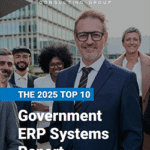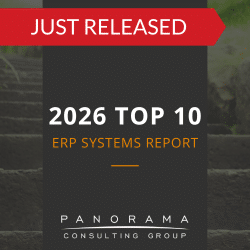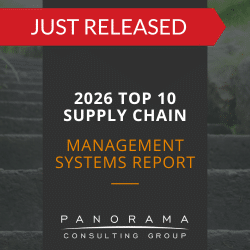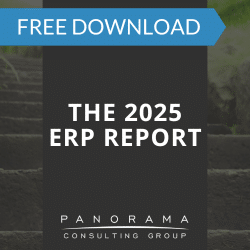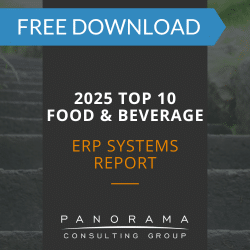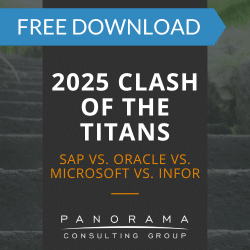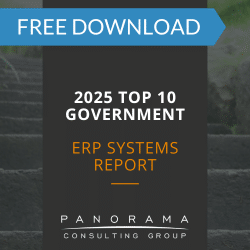Accurate demand forecasting allows companies to efficiently manage inventory, align production schedules with market demand, and optimize resource allocation.
However, the task of demand forecasting is riddled with complexities that can lead to significant failures, affecting a company’s bottom line and operational efficiency.
Today, we will explore how ERP software can mitigate these risks by improving forecasting accuracy. Keep reading to learn about the top causes of demand forecasting failure.
Demand Forecasting Failures: 6 Common Pitfalls
1. Misinterpreting Market Signals
Businesses often face difficulties in accurately interpreting market trends and consumer behavior.
For instance, a toy manufacturer may misread market trends and inaccurately anticipate demand for a new product line. This could result in excess inventory that becomes difficult to sell.
ERP vendors, like SAP or Oracle, provide real-time market data that can better predict consumer demand patterns, allowing for more accurate production and inventory management.
A Failed Payroll System Implementation
Panorama’s Expert Witness team was retained to provide a forensic analysis and written report to the court regarding the failed implementation of a major software developer’s ERP/payroll system.
2. Reliance on Outdated Methods
Many organizations still depend on manual methods for forecasting, which are prone to human error and can’t adequately handle complex data sets.
A small apparel company using basic spreadsheets for demand planning might find themselves unable to process complex variables, like seasonal trends and promotional impacts. Implementing an ERP system would introduce automated tools and algorithms that could analyze large volumes of data with greater accuracy.
3. Poor Data Integration
A lack of integrated data from various departments leads to inconsistent forecasting.
For example, if the sales and production departments of a food processing company do not share information efficiently, it might result in misaligned production plans that either fall short of demand or exceed it unnecessarily.
ERP software would integrate data across all departments, ensuring that every relevant piece of information would be taken into account for accurate forecasting.
4. Lack of Flexibility in Operations
Companies using legacy systems rather than modern ERP systems often struggle to adjust quickly to changing market conditions.
For instance, an electronics retailer using a legacy system might replace it with an ERP system capable of adjusting inventory and ordering processes in real-time. This would prove helpful during a new product launch or a sudden spike in a particular item’s popularity.
5. Failure to Scale Forecasting with Business Growth
As businesses expand, their data and processes become more complex, making it challenging to maintain accurate forecasting without scalable solutions.
ERP systems are designed to grow with your business. They can handle increased complexity in data and provide insights that are critical for adapting to new business environments.
A growing online retailer, for example, might use an ERP solution, like Microsoft Dynamics 365, to continuously improve and adjust forecasting methods for growing operational needs. This would ensure they could manage increased order volumes and new product lines effectively.
6. Inadequate Response to Supply Chain Disruptions
Supply chain disruptions can wreak havoc on forecasting models, leading to significant discrepancies between forecasted and actual demand.
A cousin to ERP systems, supply chain management software, helps mitigate this by offering tools to model various supply chain scenarios and predict their impacts on demand.
For instance, Nike’s past supply chain issues highlight the importance of robust ERP systems. After a significant forecasting error in 2001, Nike revamped its ERP approach to improve supply chain visibility and responsiveness.
This transformation allowed Nike to better manage supply chain disruptions and maintain production schedules despite unexpected challenges. The company reported $100 million in lost sales due to these disruptions but was able to recover and strengthen its forecasting processes with improved ERP implementation.
What ERP Capabilities are Essential to Demand Forecasting?
Implementing an ERP system can transform demand forecasting from a challenging task to a strategic asset. Here’s how:
1. Comprehensive Data Management
ERP systems centralize data management, ensuring that all relevant data is accessible and utilized for forecasting. This leads to more accurate and consistent predictions, especially for multinational companies with global sales data.
2. Advanced Analytical Capabilities
Modern ERP systems include advanced analytics that can process and analyze data in ways that traditional methods cannot. This involves the use of AI in ERP to predict outcomes and make recommendations.
3. Collaboration Tools
ERP facilitates better communication and collaboration across departments, ensuring that all relevant inputs are considered in the forecasting process. This integration creates a more unified approach between functions such as procurement, production, and sales
4. Real-time Reporting
With real-time capabilities, ERP systems provide up-to-the-minute data that is crucial for making informed decisions quickly. This is particularly useful when it comes to machine maintenance, inventory management, and production scheduling.
Avoid Demand Forecasting Failure with ERP Software
Demand forecasting failures can be costly and damaging to a business, but with the right tools, these issues can be minimized or even avoided.
If you’re looking to improve your company’s demand forecasting capabilities, investing in an ERP system is not just beneficial; it is essential for staying competitive in the modern business landscape.
For more insights on selecting and implementing the right ERP system for your forecasting needs, contact our ERP consultants today for a personalized assessment and solution planning.


